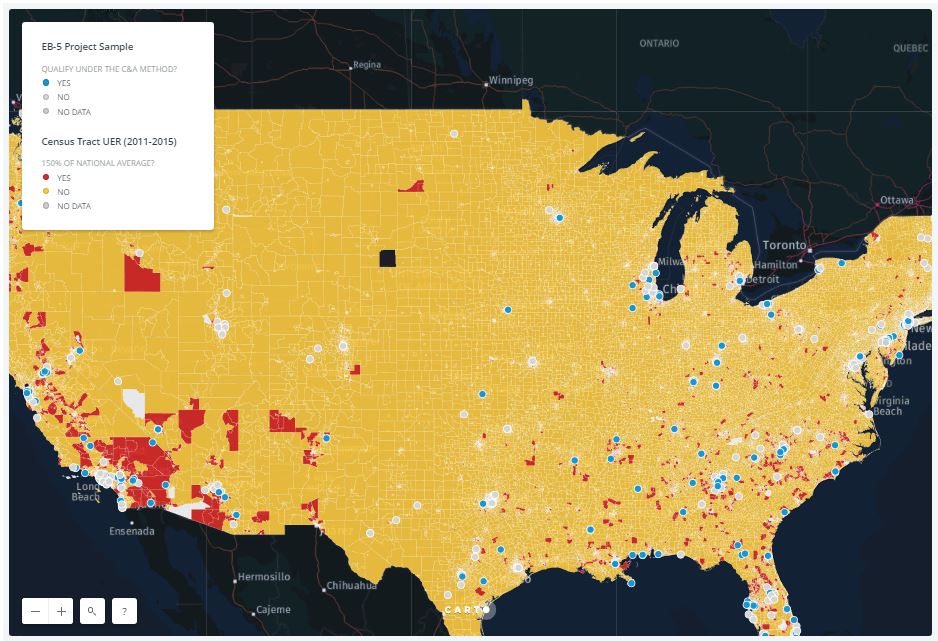The interactive maps below help to visualize how various policy proposals ( the economically highly distressed criteria versus the New Market Tax Credit criteria) in addition to regulatory proposal by the Department of Homeland Security (DHS) to reform Targeted Employment Areas’s (TEA’s) would affect the EB-5 Program. The interactive maps are part of IIUSA’s ongoing efforts to comprehensively analyze how various policy proposals to reform TEA would affect the EB-5 Program. The results are compelling and demonstrate how different approaches would affect stakeholders, projects, geographies, and metropolitan areas throughout the U.S.
TEA Census Tract Maps
Economically Highly Distressed Criteria
The blow mapping tool visualizes the policy impacts of using Economically Highly Distressed (“EHD”) criteria to reform Targeted Employment Areas (“TEAs”).
EHD criteria is defined as a census tract that has the following characteristics:
- Poverty rate greater than 30%;
- Median family income (MFI) does not exceed 60% of statewide equivalent MFI or MSA-wide MFI;
- Unemployment rate which is at least 1.50 times the national average.
Explore the Mapping Tool
New Market Tax Credit (NMTC) Criteria
The below interactive mapping tool highlights the policy impacts of using New Market Tax Credit (“NMTC”) criteria to reform Targeted Employment Areas (“TEAs”).
NMTC criteria is defined as a census tract that has the following characteristics:
- Poverty rate greater than 25%;
- Median family income (MFI) does not exceed 70% of statewide equivalent MFI or MSA-wide MFI;
- Unemployment rate which is at least 1.25 times the national average.
Explore the Mapping Tool
Single Census Tract TEA & EB-5 Project Samples Map
The interactive map below visualizes the TEA qualification with single census tract based on unemployment rate. The map also allows you to enter a location of your interest (at the lower left corner of the map) and then shows you the census tract in which your address is located. IIUSA was pleased to roll out this interactive mapping tool last year to help visualize the unemployment rate of each census tract across the country to analyze the policy impacts of the regulatory proposal by Department of Homeland Security (DHS) to reform targeted employment areas (TEAs).
In the regulatory proposal, as a new rule for TEA designation, DHS proposes:
a TEA may consist of a census tract or contiguous census tracts in which the new commercial enterprise is principally doing business (the ‘project tract(s)’) if the weighted average of the unemployment rate for the tract or tracts is at least 150 percent above the national average.
Moreover, if the project tract(s) do not independently qualify under this analysis, a TEA may also be designated if the project tract(s) and any or all additional tracts that are directly adjacent to the project tract(s) comprise an area in which the weighted average of the unemployment rate for all of the included tracts is at least 150 percent of the national average.











